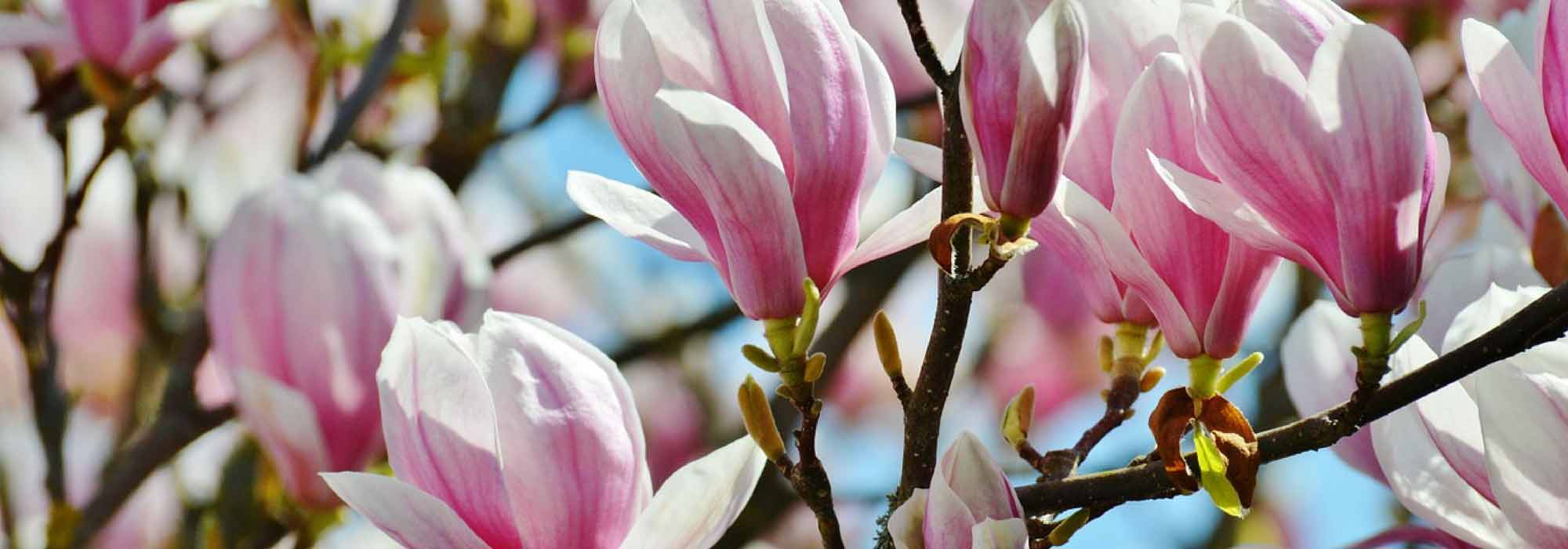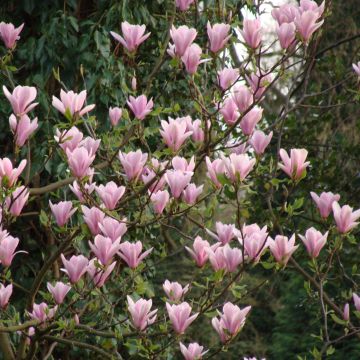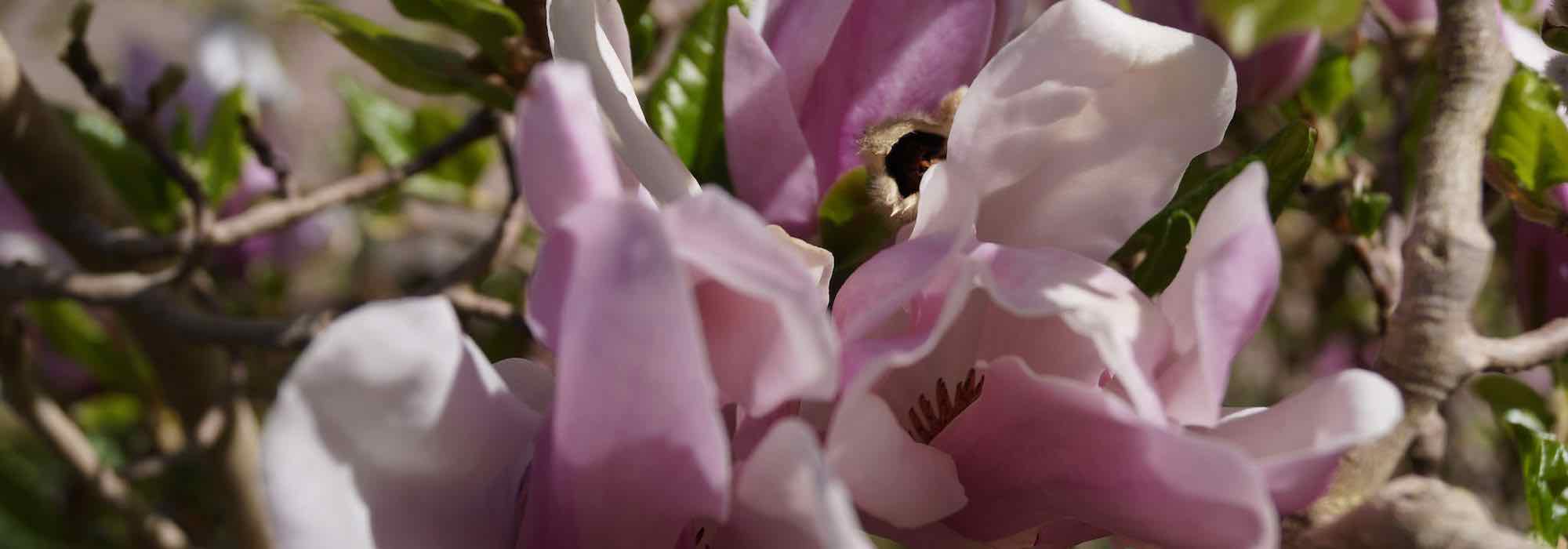

Michelia yunnanensis ou Magnolia yunnanensis
Magnolia yunnanensis
Magnolia yunnanensis
Polished-Leaved Magnolia, Smooth-Leaved Magnolia
Special offer!
Receive a €20 voucher for any order over €90 (excluding delivery costs, credit notes, and plastic-free options)!
1- Add your favorite plants to your cart.
2- Once you have reached €90, confirm your order (you can even choose the delivery date!).
3- As soon as your order is shipped, you will receive an email containing your voucher code, valid for 3 months (90 days).
Your voucher is unique and can only be used once, for any order with a minimum value of €20, excluding delivery costs.
Can be combined with other current offers, non-divisible and non-refundable.
Home or relay delivery (depending on size and destination)
Schedule delivery date,
and select date in basket
This plant carries a 24 months recovery warranty
More information
We guarantee the quality of our plants for a full growing cycle, and will replace at our expense any plant that fails to recover under normal climatic and planting conditions.
Would this plant suit my garden?
Set up your Plantfit profile →
Description
Magnolia yunnanensis, also known as Michelia or Smooth-Leaved Magnolia, is an evergreen bush native to the forests of southwestern China where it thrives in thick humus. Over time, it becomes a large bush with a short trunk and dense, slightly spreading foliage. It has beautiful, glossy dark green evergreen leaves and abundant, delicately scented spring flowers. Its long, decorative velvety buds open into cream-white flowers adorned with yellow stamens. This magnolia can be acclimated to temperate regions, both in winter and summer, in neutral to acidic moist soil.
Michelia yunnanensis, also known as Magnolia laevifolia or Magnolia dianica, is a bush belonging to the Magnoliaceae family. It is a rather dense large bush with slow growth, reaching about 4m (13ft) in height and 3m (10ft) in width under good growing conditions. It has oval and rounded, glossy and leathery leaves of a beautiful dark green colour. The undersides of the leaves are velvety brown. Flowering occurs in April-May, but camel-coloured flower buds form as early as autumn. On its branches, at the axil of the leaves, tulip-shaped cream-coloured flowers with waxy petals bloom. They are enhanced by a prominent light yellow stamen centre, emitting a delightful lemon fragrance. Flowering is followed by decorative pods, revealing shiny purple seeds. The branches of this michelia will die back at -12°C (10.4°F), but the bush will be able to regrow from the stump in spring.
This Smooth-Leaved Magnolia, which will delight collectors of hardy exotic plants, is suitable for medium-sized gardens. It can be planted on its own in a sun-exposed short grass meadow, but also included in a group of bushes or at the back of a flower bed, always in a non-burning exposure and sheltered from icy winds. It will also find its place in a large flowering hedge. Place it against a wall which gets some sun (but not too much) surrounded by shade-loving perennials. Pair this Michelia yunnanensis with mock oranges and white spireas in a hedge. It will also blend well with acid-loving bushes such as Rhododendrons, Hydrangeas, and other camellias.
Magnolia yunnanensis in pictures




Plant habit
Flowering
Foliage
Botanical data
Magnolia
yunnanensis
Magnoliaceae
Polished-Leaved Magnolia, Smooth-Leaved Magnolia
China
Other Magnolia
View all →Planting and care
Michelia yunnanensis prefers humus-rich, slightly acidic soils (pH 6.5), rich in organic matter, moist but free-draining. It appreciates semi-shaded exposures and is sensitive to scorching exposures. Also, be cautious of dry and cold winds that can damage the flowers. It can be grown in the ground in temperate regions, as its vegetation is destroyed at -12°C (10.4°F). However, it is likely to regrow from the stump, if well protected, should the aboveground parts be destroyed. Mulch the base to maintain moisture in summer and water abundantly every 15 days in case of prolonged drought. This bush does not tolerate transplantation well, so choose its location carefully once it is established.
Its appearance and growth will vary greatly depending on whether it is planted in the ground or in a container, and whether it grows in shade or in a sunny location. When it develops in the shade, its habit is more open and flexible, and its foliage is darker. On the contrary, if it is exposed to the sun, it will have a more compact habit, denser foliage, smaller leaves, and a lighter green colour. When grown in a large container, its growth is limited. Watering should be regular in summer and greatly reduced in winter: in a cold greenhouse or conservatory, water (without limestone) should be applied only when the substrate is dry to a depth of 1cm (1in) on the surface. The bush can be easily pruned after flowering. In late winter, before the resumption of vegetation growth, remove dead wood and tangled branches to keep only vigorous branches and maintain a beautiful shape.
Planting period
Intended location
Care
Planting & care advice
This item has not been reviewed yet - be the first to leave a review about it.
Similar products
Haven't found what you were looking for?
Hardiness is the lowest winter temperature a plant can endure without suffering serious damage or even dying. However, hardiness is affected by location (a sheltered area, such as a patio), protection (winter cover) and soil type (hardiness is improved by well-drained soil).

Photo Sharing Terms & Conditions
In order to encourage gardeners to interact and share their experiences, Promesse de fleurs offers various media enabling content to be uploaded onto its Site - in particular via the ‘Photo sharing’ module.
The User agrees to refrain from:
- Posting any content that is illegal, prejudicial, insulting, racist, inciteful to hatred, revisionist, contrary to public decency, that infringes on privacy or on the privacy rights of third parties, in particular the publicity rights of persons and goods, intellectual property rights, or the right to privacy.
- Submitting content on behalf of a third party;
- Impersonate the identity of a third party and/or publish any personal information about a third party;
In general, the User undertakes to refrain from any unethical behaviour.
All Content (in particular text, comments, files, images, photos, videos, creative works, etc.), which may be subject to property or intellectual property rights, image or other private rights, shall remain the property of the User, subject to the limited rights granted by the terms of the licence granted by Promesse de fleurs as stated below. Users are at liberty to publish or not to publish such Content on the Site, notably via the ‘Photo Sharing’ facility, and accept that this Content shall be made public and freely accessible, notably on the Internet.
Users further acknowledge, undertake to have ,and guarantee that they hold all necessary rights and permissions to publish such material on the Site, in particular with regard to the legislation in force pertaining to any privacy, property, intellectual property, image, or contractual rights, or rights of any other nature. By publishing such Content on the Site, Users acknowledge accepting full liability as publishers of the Content within the meaning of the law, and grant Promesse de fleurs, free of charge, an inclusive, worldwide licence for the said Content for the entire duration of its publication, including all reproduction, representation, up/downloading, displaying, performing, transmission, and storage rights.
Users also grant permission for their name to be linked to the Content and accept that this link may not always be made available.
By engaging in posting material, Users consent to their Content becoming automatically accessible on the Internet, in particular on other sites and/or blogs and/or web pages of the Promesse de fleurs site, including in particular social pages and the Promesse de fleurs catalogue.
Users may secure the removal of entrusted content free of charge by issuing a simple request via our contact form.
The flowering period indicated on our website applies to countries and regions located in USDA zone 8 (France, the United Kingdom, Ireland, the Netherlands, etc.)
It will vary according to where you live:
- In zones 9 to 10 (Italy, Spain, Greece, etc.), flowering will occur about 2 to 4 weeks earlier.
- In zones 6 to 7 (Germany, Poland, Slovenia, and lower mountainous regions), flowering will be delayed by 2 to 3 weeks.
- In zone 5 (Central Europe, Scandinavia), blooming will be delayed by 3 to 5 weeks.
In temperate climates, pruning of spring-flowering shrubs (forsythia, spireas, etc.) should be done just after flowering.
Pruning of summer-flowering shrubs (Indian Lilac, Perovskia, etc.) can be done in winter or spring.
In cold regions as well as with frost-sensitive plants, avoid pruning too early when severe frosts may still occur.
The planting period indicated on our website applies to countries and regions located in USDA zone 8 (France, United Kingdom, Ireland, Netherlands).
It will vary according to where you live:
- In Mediterranean zones (Marseille, Madrid, Milan, etc.), autumn and winter are the best planting periods.
- In continental zones (Strasbourg, Munich, Vienna, etc.), delay planting by 2 to 3 weeks in spring and bring it forward by 2 to 4 weeks in autumn.
- In mountainous regions (the Alps, Pyrenees, Carpathians, etc.), it is best to plant in late spring (May-June) or late summer (August-September).
The harvesting period indicated on our website applies to countries and regions in USDA zone 8 (France, England, Ireland, the Netherlands).
In colder areas (Scandinavia, Poland, Austria...) fruit and vegetable harvests are likely to be delayed by 3-4 weeks.
In warmer areas (Italy, Spain, Greece, etc.), harvesting will probably take place earlier, depending on weather conditions.
The sowing periods indicated on our website apply to countries and regions within USDA Zone 8 (France, UK, Ireland, Netherlands).
In colder areas (Scandinavia, Poland, Austria...), delay any outdoor sowing by 3-4 weeks, or sow under glass.
In warmer climes (Italy, Spain, Greece, etc.), bring outdoor sowing forward by a few weeks.



























































